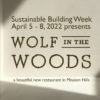
Clay Plaster as part of Sustainable Building Week 2022



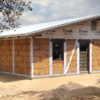
For the last 10 years, we have worked tirelessly to get more straw bale homes designed and built. For a while, it looked like the best strategy would be to design the buildings ourselves so they would be well designed for straw, and also to general contract the projects ourselves to make sure that the people in charge knew how to build with straw, and then also to do the bale, lath, and plaster work ourselves since it is our specialty. After seeing this cycle through for a few houses, we realized that we were doing the opposite of our goal to get more straw bale homes designed and built: we had become a bottleneck for straw bale building because we were too busy with the lengthy design and permitting process to take on more projects, or we were too tied up with the process of general contracting a whole house to take on more projects and we didn’t have enough experienced designers and builders to refer people to. We needed to create more capacity.
Since we had no interest in becoming a large, impersonal contracting company, we decided that networking was the way to go. So this is how we’re doing it now: when a potential design-build client contacts us, we put them in touch with designers we know who have made a commitment to designing well with straw. We stay involved with the design as consultants, reviewing the plans and making strategic suggestions before the plans are permitted. We also consult with the general contractor — usually someone the client has found who is interested in building with straw but has little to no experience with it — to help them and their subcontractor understand the crucial differences. Then, when it’s time to stack the straw, lath the bales, and apply the natural plasters, we come in and do this specialized work ourselves.
This strategy means that we are still involved early enough in the development to make sure the plans are well designed for straw, we stay involved to make sure the people in charge of the project know how to build with straw, and we do the specialized work specific to the bales and plasters. This frees us up to help more clients and it also expands the number of designers and builders who have experience with straw. At some point, we may make ourselves redundant by sharing our hard-won knowledge so widely but we would consider that success because the goal is to get as many straw bale homes as possible built.
If you are interested in building with bales — for yourself, as a designer, or as a contractor — please get in touch with us and become part of our network.
~ Rebecca & Mike

My last post was about how well the super-insulated, high-mass, natural homes we build perform in heatwaves and power outages, but few of us currently live in such homes. Most of us live in homes that were built with minimal insulation or consideration for solar orientation. Short of knocking these houses down and starting over, what can be done to make them more comfortable and efficient this summer?
Here are some reasonably achievable strategies to make the best of your existing home during the hottest days of the year. Most of them do not rely on electricity.
Bank the cool – Open windows at night to capture cooler night air then close them before the outdoor temperature rises again. This will start you off on good thermal footing for the day, though how long the cool will last depends.
Keep the sun out – Sunlight coming through glass = heat gain. To stop more of the heat, the sunlight needs to be stopped before it gets inside. If you have East facing windows that get direct sun in the morning, South facing windows that get sun any time of day, or West facing windows that get afternoon sun, create shade on the outside of those windows to prevent heat gain. Installing exterior shades that can be lowered and raised as needed is one solution. A longer-term solution would be building awnings, pergolas, or planting trees.
Lighten the load – Turn off or unplug any appliances that you do not need. Some appliances shed heat that will add to the problem. If you have a gas wall furnace with a pilot light that is always lit, consider shutting it down for the summer to eliminate a significant source of unwanted heat. Also, making cold meals or cooking outdoors on the grill will help prevent extra heat buildup.
Move the air – Although they do not change the air temperature, ceiling and floor fans can be cooling. They cause perspiration on the skin to evaporate, creating evaporative cooling. Make sure ceiling fans are set to draw air upwards during the summer for maximum effect.
Direct the airflow – When opening windows or doors for ventilation, try to direct the airflow in from as low as possible on the North side of the house then exhaust it out as high as possible, ideally through a skylight. This will help create a stack effect that will draw in the coolest air and get rid of the hottest air. Avoid opening windows and doors on the South side of the house as this is typically the hottest area.
Cool air with mist – When water evaporates, it absorbs heat. Misters that emit a fine spray of water can effectively cool the air by as much as 15˚ within the 6′ radius. Adding misters to a south-facing patio can help cool the hottest side of the house and reduce the heat island effect. This works best when the humidity is low, the cooling capability of a mist will be reduced with higher humidity levels.
The strategies above will make some difference but to really address the issue, consider what might be possible for your home from the list below:
Get a good hat for your house – We tend to think of insulation as keeping us warm but it can also keep us cool. Insulation slows the movement of heat from one place to another, such as from the blazing outdoors into your comfortable home. If you have an attic space with no insulation or old, inadequate insulation, have an insulation company give you an estimate to clean out the old insulation, seal air leaks, and install new installation to at least R-30. Insulating the attic/roof is the single most effective place to insulate as 40-60% of heat loss or gain happens through the roof. If possible, also have them add a radiant barrier in the attic to help bounce radiant heat back out.
Get a good coat for your house – If you don’t have insulation in your walls, consider getting an insulation company to blow insulation into your wall cavities. This involves them making small holes in each stud bay and then forcing chopped insulation into the wall. It is not a perfect solution as some areas may not get completely filled, but it is much better than nothing.
Stop air leaks – Air leaks undermine all of these other strategies because they cause the cool air you have to be lost and diluted with hot outside air. They are uncontrolled, unintentional air movement: air could be coming in from the attic or the South side. If your windows or doors are old and ill-fitting, consider adding weather stripping or possibly replacing them. Have an energy consultant do an audit of your home to determine the sources of air leakage and possible solutions.
Consider internal thermal mass – This one is trickier but worth thinking about. If you have any dense, heavy surfaces or objects that receive direct sunlight, they will act as a heat battery, absorbing, storing, and emitting lots of unwanted heat. Find ways to prevent them from receiving direct sunlight. On the other hand, if these same dense, heavy surfaces or objects can be cooled, they will act as a battery for cool, effectively creating heat sinks to suck heat out of the air.
Consider external thermal mass – As you can see in the photo above, stucco is a high-mass surface and can get extremely hot sitting in the sun. That means long after the sun goes down and the air temperature cools, this stucco will be radiating heat. Without good insulation, much of that heat will be transferred indoors. If this wall was shaded, it would not become as hot.
Make your surroundings cooler – The materials we put next to and around our houses have an effect on how hot our immediate microclimates are. Unshaded paving, gravel, and other high-mass materials absorb heat, making our surroundings hotter. Plants, shrubs, and trees do not heat up and also shade the soil, lowering the ambient temperature. Do consider wildfire safety guidelines when adding plantings around your home.
I hope these tips for making existing homes more bearable in the heat are helpful in the short term. I will keep dreaming of a future when we all live happily ever after in well-built, super-insulated, high-mass homes that stay 72˚ all year round.
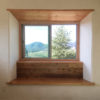
We build houses that stay cool in heatwaves even when the power goes out. Interested? Then we’re going to have to talk about insulation, thermal mass, and passive systems. I know those are boring words but put them together right and they get very sexy results. Talking about electric engines is boring, driving a Tesla is sexy. So buckle up and come for a drive with me…
The recent heatwave in the North West has woken many people up to the new realities of a changing climate. In places that are not accustomed to 100˚+ heat, a prolonged heatwave is miserable and even dangerous. Buildings with poor insulation, no radiant barriers, and bad ventilation offer little shelter and can even make the situation worse.
Even in places where hotter temperatures are the norm, like here in inland San Diego County, many homes still rely on electrical cooling to function. And if everyone is relying on the air conditioning, that puts a huge strain on the power grid which can lead to blackouts, rendering the AC useless and the homes uncomfortably hot.
As the climate gets more erratic, more people will want to have the option of turning on the AC. Of course, this will lead to more strain on the power grid, elevating the chances of blackouts. It will also mean more energy use, which likely translates to more greenhouse gas emissions…which leads to more climate change. AC is an ineffective and counterproductive “solution.”
Wouldn’t it be wonderful to be comfortable in our homes when it’s hot out, even if the power goes out? It’s a luxurious and downright sexy idea. To get there, we have to talk about some effective but not-very-exciting strategies.
Insulation. Did your eyes just glaze over? Come on, stay with me for the payoff. Think of insulation as the puffy, down sleeping bag you take camping. Insulation prevents heat or cool from moving from one place to another, such as from the cold night air into your cozy sleeping bag or, in the opposite direction, from the blazing outdoors into your comfortable home.
The higher the insulation value of a material, the longer it takes for heat to get through that material. Good building code require R-19 insulation in walls and at least R-30 in attics for this climate. Most homes were built before good building codes and many have almost no insulation. My house was built in the 1950s with zero insulation. I’ve been able to add about R-5 in narrow space in the walls but there’s nothing in the cathedral ceiling yet. Without the AC running, it only takes a few hours for the heat of the day outdoors to get indoors.
If my home had R-19 insulation in the walls and R-30 in the ceiling, it would probably take most of the day for the house to heat up. With its unshaded South-West facing windows, it would certainly be hot by the time I got home at end of the day. So like all of my neighbors, I would turn on the AC until the cooler nighttime temperature started to get indoors. And hopefully, the power would not go out as we all tried to cool our homes down at once.
If my home had R-30 insulation in the walls, R-60 in the roof with a radiant barrier (as do the homes my company builds), the heat coming through the walls or ceiling would be so minimal that it would not be an issue. Heat coming through windows would still matter, so we orient our homes for maximum shade during the warm months.
So insulation can make a big, sexy impact, but the other key to building comfortable homes is an idea we’ve almost lost in the construction industry: thermal mass. Did you nod off then? Pinch yourself, I promise it’s worth it.
If insulation is the sleeping bag, what is thermal mass? It’s some ye olde gadget like a hot water bottle. In the olden times before central heating, people would sleep with a hot water bottle under the bedcovers. Water has good thermal mass – the ability to absorb and store heat – so the bottle of hot water would stay warm after the fire in the hearth died out and the air temperature dropped. Thermal mass can also be understood by cooking in a cast-iron skillet: once the skillet is hot, it stays hot after you turn the heat off under it. Or a tile floor that stays cool underfoot even as the air temperature warms up. These are all examples of thermal mass, something we desperately need more of in our homes because it can act like a battery and a fly-wheel for maintaining the right temperature.
What if you had the best of both worlds: the down sleeping bag and the hot water bottle to keep you toasty all night? What if your house had insulation and also had mass, maybe in the concrete floor and the plastered walls? It would mean that once your house reached a good temperature, say 72˚, it would be easy to keep it there no matter what was going on outside. Maybe in the winter, you’d need to run your heating once in a while to get the house from 69˚ back up to 72˚. Maybe in the summer, you’d need to open some windows at night to catch the cool breeze and bring the house from 74˚ back down to 72˚. Wouldn’t that be nice?
A well-insulated house with good thermal mass is a beautiful thing that only requires small inputs of energy. But give it too much energy and it will overheat and hold onto that heat. Unshaded South or West-facing glass walls could create a greenhouse effect so ensuring the house has the correct passive solar orientation for its climate is important. When we build here in inland San Diego, we build for shade and passive cooling.
The idea of passive systems is the last snoozer I will bring up to get us to our sexy Tesla house. What will happen if the power goes out in your super-insulated, high-mass house oriented for shade? Not much. You will notice very little difference in your thermal comfort. The temperature will not change. Say it’s 72˚ degrees inside and 100˚ outside. You’re feeling happy, maybe even a little smug, but then you have to open the door for a minute. Oh no! A blast of hot air comes in, some of your precious cool air goes out… and then your amazingly sexy house absorbs that heat and cools the air back down to 72˚ through the magic of thermal mass. You do not miss the AC because you are comfortable. And your home will be comfortable for a few days, probably long enough for the power to be restored. Even if the power is out for a crazy, hot week, your house will only get a few degrees hotter each day and you may be able to cool it enough by opening windows at night. Wouldn’t that be nice?
Yes, in a power outage you’d still have all of the other inconveniences of being without power (unless you had some of those voluptuous Tesla PowerWall batteries) but you’d be relatively comfortable, surprisingly resilient, and feeling happy in your sexy, super-insulated, high-mass, passive home.
We’ve arrived at our destination, thanks for coming on this ride with me. Maybe next time we’ll head out and explore how this same type of home can actually combat climate change by locking up carbon in its walls. Or maybe consider that they have better indoor air quality because they have fewer toxins built into them and they regulate their own humidity. Or how remarkably well they resist wildfire. So many interesting places we could go…

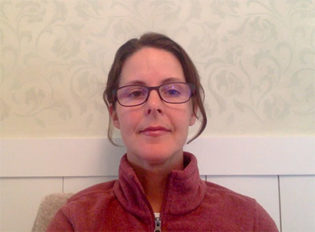 Here is a short video we made for San Diego’s Sustainable Building Week 2021 about how biogenic materials – such as straw – not only reduce the carbon emissions associated with construction, they can even trap and store carbon in buildings, helping to reverse climate change.
Here is a short video we made for San Diego’s Sustainable Building Week 2021 about how biogenic materials – such as straw – not only reduce the carbon emissions associated with construction, they can even trap and store carbon in buildings, helping to reverse climate change.
Running April 12 -16, 2021, Sustainable Building Week highlights local organizations going above and beyond in sustainability and improving our built environment. For more info and links to all the events, check out the website.
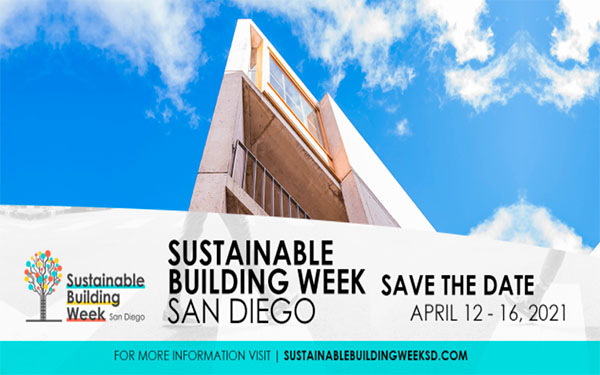
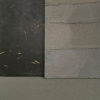
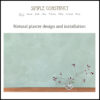
Interested in learning more about natural plasters? Check out our new website: www.naturalplastersandiego.com

Natural plaster can’t fix the big problems in the world today but it can help you create a calm, beautiful sanctuary in your home.
Many of us have found ourselves spending more time at home recently and probably more time thinking about what it is to be healthy, both physically and emotionally. With so many uncertainties, many people are experiencing high levels of stress and are looking for ways to stay centered.
If you’ve found yourself at home, staring at the walls, you may have started to think more about what ‘home’ is, what you want your home to be. What would it take to create more beauty and a sense of calm in your home? What would make it feel more like a sanctuary that reflects your values and aesthetics?
This is what natural plasters can do. Natural plasters create a rich, subtle background. A natural plaster is one made with sand, a binder of clay or lime, mineral pigments, and no synthetic additives. Whether rustic and earthy or fine and polished, clay and lime plasters add deep visual interest and a sense of solidity to a space.
Have you ever found yourself inexplicably attracted to a photo of a room without being able to put your finger on what makes it so lovely? It might be the plaster. Look closely at the walls. Do they seem to have varying tones, depth of color, subtle texture? Then it’s probably plaster, the unsung hero of interior decor. Whether it’s bold texture or subtle color variation, nothing creates as much depth of interest on a wall as plaster.
Natural plasters beg to be touched and they feel like stone, whether it is polished marble or rough-hewn sandstone. They attract the eye and can create a calm canvas on which to meditate or an active work of art that inspires. Facets in the sand reflect the light, the depth of the surface creates tonal differences, and inclusions –such as black sand or mica– lend minute detail.
And there are additional benefits beyond beauty. Natural plasters contribute to better indoor air quality. They do not contain VOCs (volatile organic compounds) and will not off-gas when applied, so you are not building toxins into your home. Clay plaster has the miraculous ability to safely store extra humidity and then release it when the air is drier. This not only makes you feel more comfortable but helps to stop condensation that leads to mold growth. Clay plaster is softer than painted drywall, causing sound to bounce and echo less. Lime plaster has a very high pH, making it naturally antiseptic and anti-fungal. Both plasters have thermal mass which helps you hold on to your heat in the winter or cool in the summer.
Natural plasters are also better for the planet. Clay plasters require very little processing and have incredibly low embodied carbon. Lime plasters have lower embodied carbon than cement-based stuccos. Both types create less pollution than their synthetic counterparts.
No, natural plaster will not stop a global pandemic, fix racial inequality, or restore the economy. But it is very beautiful, it is good for your health, it is not bad for the planet, and it may help you find some precious sanctuary in these difficult times.
If you are interested in learning more, check out our new website dedicated to natural plasters: www.naturalplastersandiego.com

Simple Construct stands with Black Lives Matter and supports equality and freedom from oppression. If you need any help getting it, check out this adorable girl’s sign:

And if you are wondering why a natural building company would post something political like this, it’s because we feel it would be wrong to stay silent:
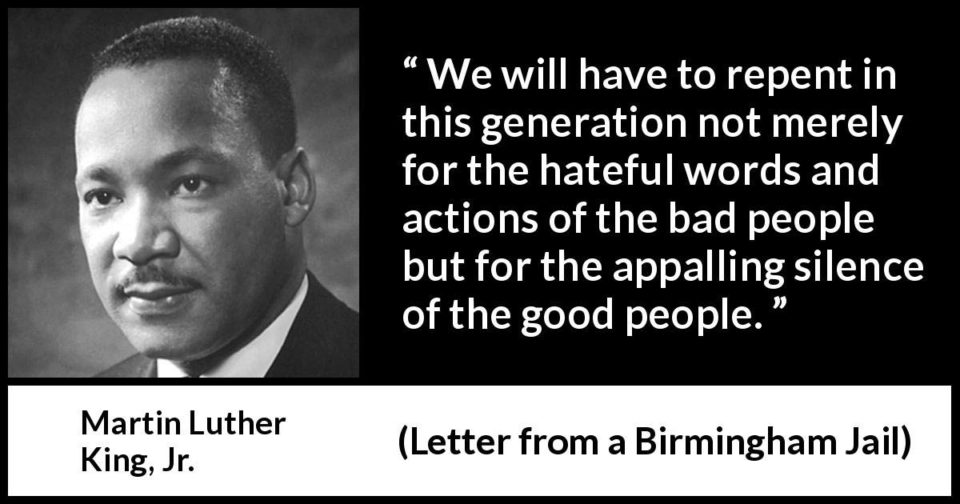
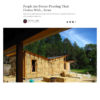
I was happy to contribute to this article about the remarkable fire-resistance of straw bale buildings: https://onezero.medium.com/people-are-future-proofing-their-homes-with-straw-e25b470f5474
All content © 2025 Simple Construct : ♥ kellyscurtis